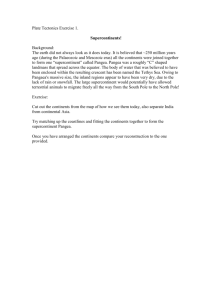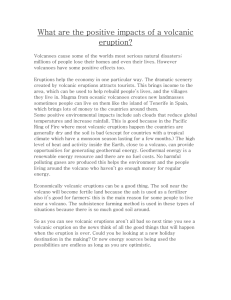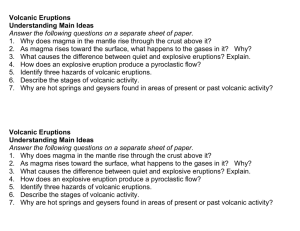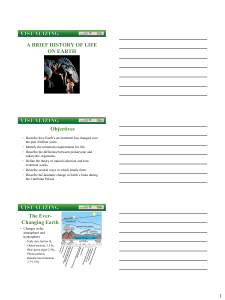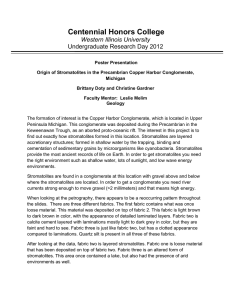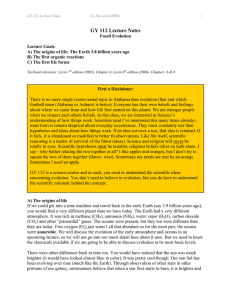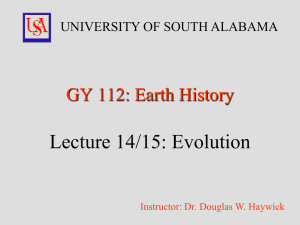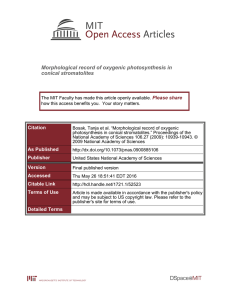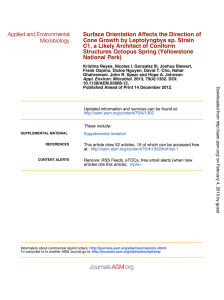File
advertisement
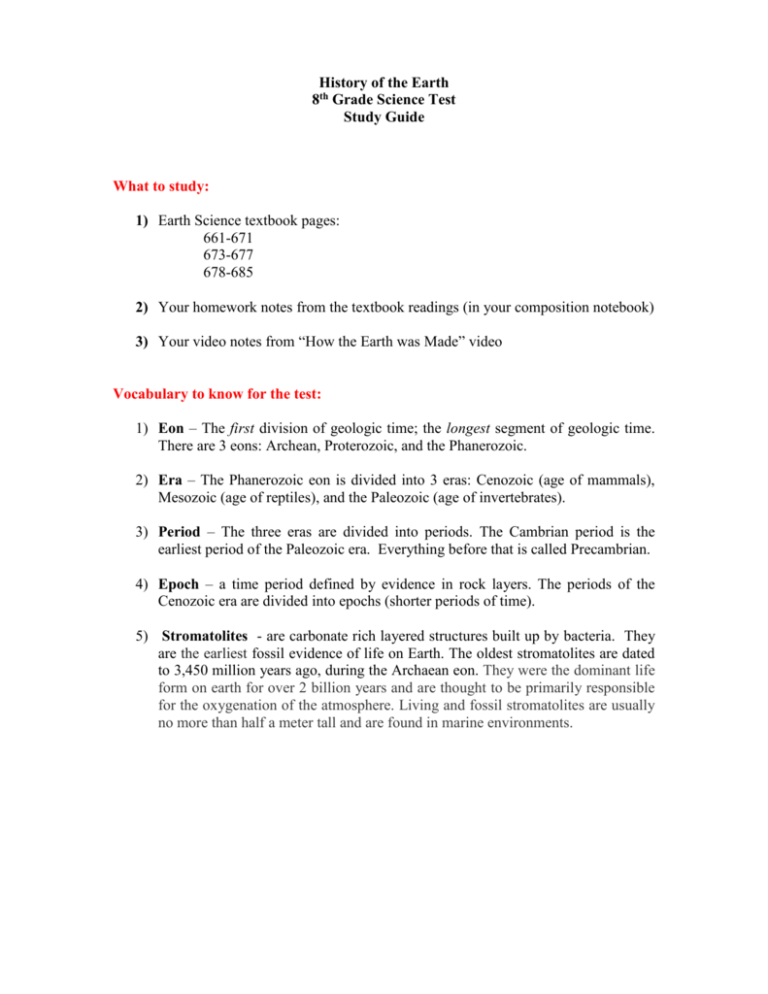
History of the Earth 8th Grade Science Test Study Guide What to study: 1) Earth Science textbook pages: 661-671 673-677 678-685 2) Your homework notes from the textbook readings (in your composition notebook) 3) Your video notes from “How the Earth was Made” video Vocabulary to know for the test: 1) Eon – The first division of geologic time; the longest segment of geologic time. There are 3 eons: Archean, Proterozoic, and the Phanerozoic. 2) Era – The Phanerozoic eon is divided into 3 eras: Cenozoic (age of mammals), Mesozoic (age of reptiles), and the Paleozoic (age of invertebrates). 3) Period – The three eras are divided into periods. The Cambrian period is the earliest period of the Paleozoic era. Everything before that is called Precambrian. 4) Epoch – a time period defined by evidence in rock layers. The periods of the Cenozoic era are divided into epochs (shorter periods of time). 5) Stromatolites - are carbonate rich layered structures built up by bacteria. They are the earliest fossil evidence of life on Earth. The oldest stromatolites are dated to 3,450 million years ago, during the Archaean eon. They were the dominant life form on earth for over 2 billion years and are thought to be primarily responsible for the oxygenation of the atmosphere. Living and fossil stromatolites are usually no more than half a meter tall and are found in marine environments. Facts from Earth’s timeline to know for the upcoming test on Monday, September 28th: (these were all in the video) 4.5 Billion years ago: The Earth is formed from the collision of countless meteors in the young solar system. The planet’s surface is an ocean of molten rock. 4.4 Billion Years ago: Due to the gradual cooling, the surface of the Earth solidifies. Water begins to form on the surface. 4 Billion Years ago: After millions of years of relentless rain, 90% of the Earth is covered by water. 3.5 billion years ago: Granite is first formed. The continents begin to take shape. 2.5 Billion years ago: Stromatolites begin filling the atmosphere with oxygen. A quarter of the planet’s surface is covered by land. 1.5 Billion years ago: Increased levels of oxygen make the seas and the sky look blue. 1 Billion years ago: Rodinia, the first supercontinent, is formed by the collision of all the Earth’s continents. 700 Million years ago: Ice covers the entire Earth, killing almost all life. 650 Million years ago: Volcanic eruptions begin to tear Rodinia apart. toward the poles. Ice begins to retreat 500 Million years ago: There is a dramatic increase in the number and complexity of life forms, know as the Cambrian explosion. 400 Million years ago: The development of the ozone layer frees life to leave the ocean. 300 Million years ago: The continents converge again to form the supercontinent Pangea. Huge insects, amphibians, and early reptilians begin to live on land. 250 Million years ago: Huge volcanic eruptions cause the extinction of 95% of living species. 230 Million years ago: The first dinosaurs evolve. 180 Million years ago: Pangea beings to break apart. 100 Million years ago: Dinosaurs dominate a world largely covered by lush tropical landscapes. 65 Million years ago: An enormous meteor lands in Mexico. In combination with large-scale volcanic eruptions, this event creates a huge dust cloud that causes the dinosaurs and 70% of all species on Earth to become extinct. 55 Million years ago: “The Age of Mammals”. The Earth’s landscapes begin to take their current forms. 6 Million years ago: The Grand Canyon begins to be formed. 2 Million years ago: Ancestors of modern humans are first seen. The ice ages arrive. 10,000 years ago: The last ice sheets retreat to the poles. Human life flourishes. Scientists to be familiar with – what were their contributions with regards to the age of the Earth? James Hutton Lord Kelvin Arthur Holmes Claire Patterson
